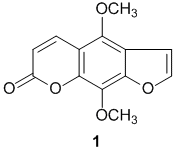It has come to our notice that certain fraudulent individuals or entities are misusing our Company’s name and TCI’s registered trademarks by promoting and offering regulated and hazardous chemical substances through online platforms like YouTube. We hereby categorically clarify that TCI has no association or connection whatsoever with the products being displayed or sold in the videos. These products have been falsely represented as being associated with TCI, and the unauthorized use of our trademark and brand name is both illegal and misleading. TCI Chemicals markets and sells its products exclusively through its official website and authorized distributors. If you become aware of any such fraudulent activity or require clarification, you may reach out to us at: Sales-IN@TCIchemicals.com. Click Here to View the Caution Notice.
Product Document Searching Made Easy by 2D Code! | [Product Highlights] Endogenous Biotin-Blocking Reagent...Maximum quantity allowed is 999
Please select the quantity
Bioactive Component in Apiaceae (Umbelliferae)
Isopimpinellin (1), a kind of furanocoumarin, is found in Apiaceae (Umbelliferae) such as celery and parsley, and Citrus such as lime and grapefruit.1) It has been known that furanocoumarins as typified by bergamottin induce photodermatosis, which is produced in plants as a defense against herbivorous animals.2) However 1 does not have phototoxicity,3) but has an antifungal effect, an insecticidal effect and an antifeeding effect.4) In addition, Cnidii Monnieri Fructus, dried fruits of Cnidium monnieri CUSSON (Apiaceae), contains 1, and is used as a crude drug in traditional Chinese medicine. The evidence of an antipruritic effect has been revealed.5) It has been also reported that 1 regulates cytochromes P450 (hepatic detoxicating enzymes) and inhibits tumorigenesis induced by the metabolites of polycyclic aromatic hydrocarbons (PAHs).6)

References
- 1) The natural coumarins: occurrence, chemistry and biochemistry
- 2) Furanocoumarin induction in wild parsnip: Evidence for an induced defense against herbivores
- 3) a) Furocoumarins of Heracleum Laciniatum: isolation, phototoxicity, absorption and action spectra studies
- b) Isopimpinellin is not phototoxic in a chick skin assay
- 4) a) Antifungal activity of coumarins
- b) Insecticidal effect of phthalides and furanocoumarins from Angelica acutiloba against Drosophila
melanogaster - c) Osthol and isopimpinellin from Fructus cnidii for the control of Dactylogyrus intermedius in Carassius
auratus - d) Phloroglucinol-type furocoumarins, a group of potent naturally-occurring insect antifeedants
- 5) a) Inhibition of itch-scratch response by fruits of Cnidium monnieri in mice
- b) Antipruritic effect of Cnidii Monnieri Fructus (fruits of Cnidium monnieri Cusson)
- 6) a) Inhibition and inactivation of murine hepatic ethoxy- and pentoxyresorufin O-dealkylase by naturally
occurring coumarins - b) Oral administration of the citrus coumarin, isopimpinellin, blocks DNA adduct formation and skin tumor
initiation by 7,12-dimethylbenz[α ]anthracene in SENCAR mice - c) Effects of naturally occurring coumarins on hepatic drug metabolizing enzymes in mice

